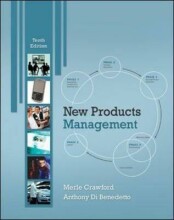Summary: 1Ck80 - International & Strategic Risk Management
- This + 400k other summaries
- A unique study and practice tool
- Never study anything twice again
- Get the grades you hope for
- 100% sure, 100% understanding
Read the summary and the most important questions on 1CK80 - International & strategic risk management
-
3 Week 3
-
3.1 Chapter 7 Futures and Options on Foreign Exchange
This is a preview. There are 11 more flashcards available for chapter 3.1
Show more cards here -
Two properties of forward contracts:
Non-standard nature - highlycustomizable to needs of thebuyer and seller w.r.t. the commodities, amounts,deliverydates ,settlements OTC (Over the counter) - Not traded on any exchange
-
How is a futures contract like a forward contract?
A futures contractis like a forward contract. Itspecifies thatacertain currency will be exchanged for another at aspecified time in the future at a price decided today. -
How is a futures contract different from a forward contract?
Itis different from a forward in that futures are standardized, traded on organized exchanges and areresettled daily viaa clearinghouse . -
What are the standardizing features of a futures contract?
- Contract size
- Delivery date
- Daily resettlement (or Market-to-market)
- Contract size
-
What is the relationship between (currency) futures and forwards?
- Both the
foward andfutures market are useful for price discovery - Both (should) show similar a trend
- Futures can be
priced similar to forwards usingIRP model
- Both the
-
Difference between European vs. American options:
- Exercise policy: European options can only be exercised onthe expiration date while American options can be exercised atany time up to and including the exercise date
- Moneyness:
- -If immediate exercise is profitable, an option is “in the money”- “Out of money” options can still have value
-
How is the option pricing formula built?
T = expiration time
E = exercise price
S_T = expiration date spot price
c_0 = initial investment call
p_0 = initial investment put
C_aT = value of the American call at expiration time T
C_eT = value of the European call at expiration time T
P_aT = value of the American put at expiration time T
P_eT = value of the European put at expiration time T -
Option profit profiles (put)
- If the put is
in-the -money, it is worth E -S_T . The maximum gain is E - P_0 - If the put in
out-of -the-money , it is worthless, and the buyer of the put loses his entire investment of p_0
- If the put is
-
Basic option pricing relationships; calls
- At expiry, an American option is worth the same as an European option with the same characteristics
- If the call is in-the-money, it is worth
S_T - E - If the call is out-of-
the-money , it isworthles
- At expiry, an American option is worth the same as an European option with the same characteristics
-
European option-pricing relationships:
The pricing boundaries for European options are more complex because they can only be
exercised at expiration. There are two portfolios a US dollar investor could make:- Purchasing a European call option and lending/investing an amount equal to the present value of the exercise price of the exercise price at the US interest rate. The cost of this investment is: Ce + E/(1+r$).
- Lending the present value of one unit of foreign currency at the foreign interest rate. The cost of this investment is: St/(1+r).
- Higher grades + faster learning
- Never study anything twice
- 100% sure, 100% understanding






























